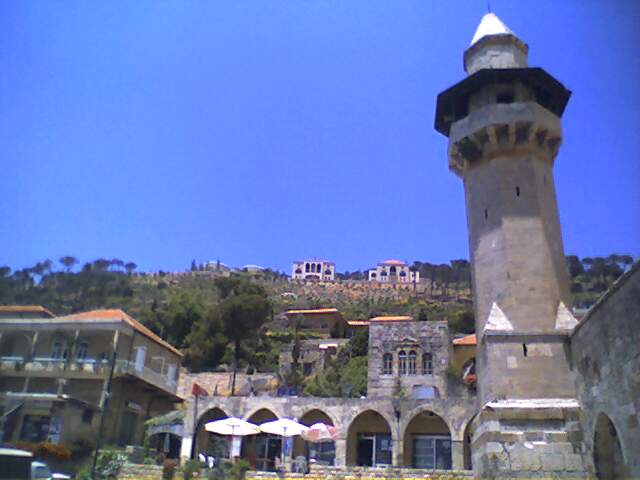Deir Al Qamar
Profile Altitude:
665m
Distance from Beirut: 45km
Getting there
From Beirut, take Khalde Highway South passing
through Khalde, Damour, exiting the highway 2km away, heading east towards
Kfarhim, Deir
el Qamar.
|
 |
Deir Al Qamar
A scenic town with many
well-preserved historical buildings.
Famous for its palaces which display the ancient Lebanese style in architecture.
It played a very important role in the history of Lebanon.
The most famous
remains in Deir Al Qamar is the
mosque of Emir Fakhr Eddine and the castle of Emir Melhem Shehab.
On the way to it, you will notice the Musa Castle. It was
built by a man with a strange fetish for things medieval.
Considered
as a well-preserved traditional village, Deir Al Qamar’s sites include the
palace of a former Ottoman governor, a restored silk souk where rows of arched
alcoves once sheltered merchants, a wax museum featuring historic figures in
realistic settings, a late 16th century emir’s palace, and many homes with two
arched windows typical of the region. It was declared a World Heritage Site by
UNESCO, where it does not only preserves its grand feudal architecture,
but its old stepped streets walled gardens
and picturesque corners as well.
Deir Al Qamar
in History
Shortly after
Emir Fakhreddine II came to power in 1590, a chronic water shortage in Baaqline
forced him to move his capital to Deir Al-Qamar. There he ruled until his death
in 1635. The town remained the residence of the governors of Lebanon until the
18th century, when Emir Bechir II Chehab moved the capital to
Beiteddine
The huge public square or midan, which was originally used for jousts and other
equestrian contests, is surrounded by historic buildings. The large water
fountain was added in the 19th century.
In the square itself is Fakhreddine’s Mosque, constructed in 1493 and restored
in the 16th century by Emir Fakhreddine I Maan for his Muslim
mercenary soldiers. Behind the mosque is a 19th century
leather-worker’s Souk or market, which today houses modern shops.
 |
|
Beyond the
souk is the Palace of Emir Younes Maan. Emir Younes, the brother of Emir
Fakhreddine II, was army commander during Fakhreddine’s voluntary exile to
Italy in 1613. Later, Emir Yousef Chehab (1770 - 1789) demolished the third
story and used the stones to build his own residence, now the Serail or
Municipal Palace. |
The Silk Khan or Qaissariyyeh, located north of the Emir Yousef Chehab Serail,
was built in 1595 during the reign of Fakhreddine II.
It was designed
in the classical Khan or caravansary style, and originally used as a public
market place for jewellery and for silk. Today the khan makes a unique setting
for cultural activities.
Nearby is the synagogue, which was built in the 17th century to serve
the local Jewish population, some of whom were part of the immediate entourage
of Emir Fakhreddine II.
In the area of Deir A-Qamar not far from Kfarhim, a sign marks the right turn to
Jahiliyeh. Once in the village, a path leads to the riverside, where water flows
down the mountain in a series of cold pools and waterfalls, specially refreshing
in the hot summer months.
Information From the Ministry of
Tourism

|